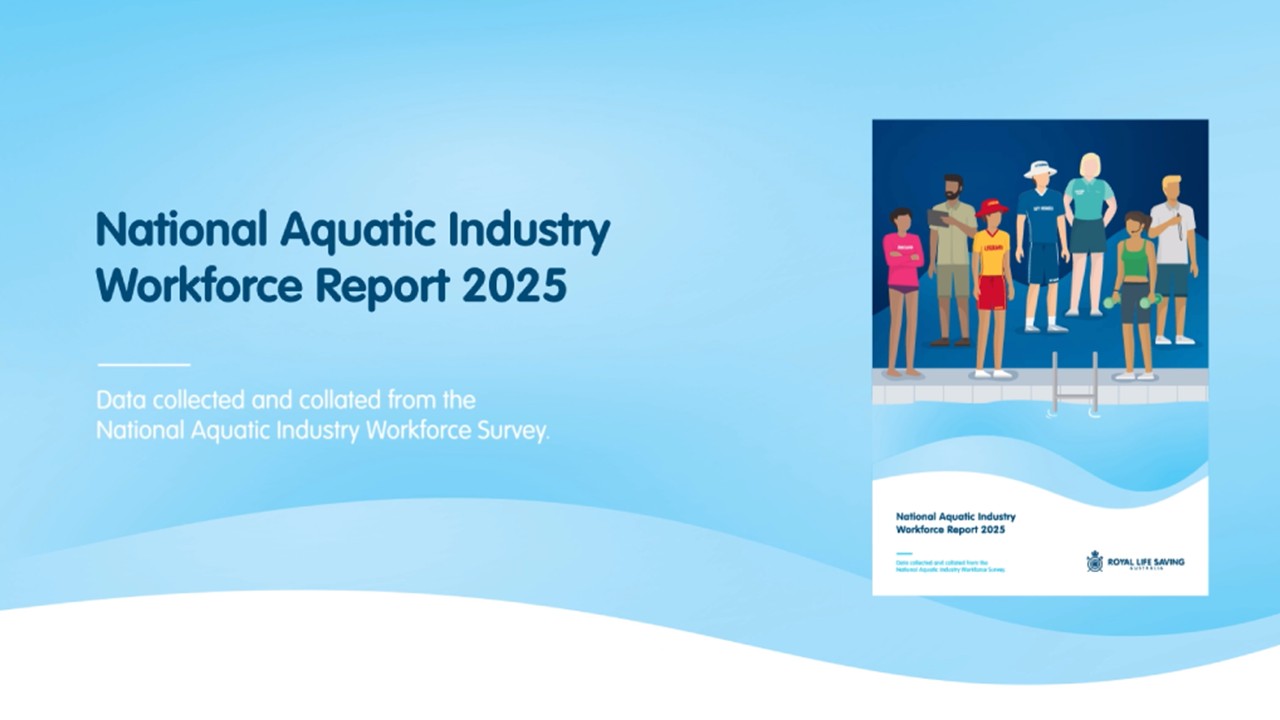Published 25 September 2025

Protecting People, Building Futures: National Aquatic Industry Workforce Report Sets Priorities for Aquatic Sector
Royal Life Saving Australia, with the support of the National Aquatic Industry Committee today released the National Aquatic Industry Workforce Report 2025, providing the most up-to-date and comprehensive evidence yet on the size, profile, issues, needs, challenges, and opportunities of Australia’s aquatic workforce.
Drawing on more than 6,000 survey responses and workforce modelling using a variety of authoritative sources, the report estimates there are approximately 85,000 workers employed in aquatic facilities nationwide. The largest groups are swimming and water safety teachers, followed by lifeguards and customer service officers.
The findings highlight encouraging progress, with women now holding 54 per cent of senior leadership roles and more than half of respondents agreeing the aquatic industry offers good career opportunities. However, the report also identifies significant risks.
One in four aquatic workers report experiencing occupational violence and aggression (OVA) frequently, nearly half say they feel unsafe at times in their role, and almost one in five describe their safety fears as very high.
Despite some improvements in hours worked, many roles remain casual, with a large portion of the workforce struggling to secure sufficient hours to achieve financial security.
Report author and Royal Life Saving Australia’s National Manager – Training & Workforce Development, Shaun Jackson, said the findings should highlight significant opportunities for sector leadership.
“The findings are both sobering and motivating. Aquatic facilities are staffed by people who do deeply important work and are largely values driven. If we ignore the rising impacts of occupational aggression and violence, insecure work, and leadership gaps, we risk undermining the safety of our workers and the patrons and communities they support,” he said.
Sector leaders echoed the importance of coordinated action. Georgie Nichol, Executive General Manager at AUSTSWIM, said the report provides the data needed to drive change.
“When swim teachers and other aquatic staff have strong development opportunities, career pathways and better support, the whole sector and broader community benefits.”
Scott Vanderheyden, General Manager – Health & Safety at Belgravia Leisure, said the findings will strengthen approaches to protecting the health and safety of the workforce and public.
“As Australia’s largest national operator of aquatic facilities, we see first-hand how staffing vulnerabilities and safety concerns impact our ability to deliver. These findings will help us advocate and strategise improved workforce protections and investments nationwide.”
Nadine Kemp, General Manager of Recreation at the Y Victoria, said the opportunity is clear.
“Every swim teacher, lifeguard, and customer service officer deserves work that is safe, supported, and valued. When we get that right, the sector is resilient, inclusive, and sustainable.”
The report sets out four key priorities for action across the sector, calling for urgent steps to address OVA, strengthen leadership capability, build diversity and inclusion, and prepare for the changing nature of work through technology and digital systems.
RJ Houston, Royal Life Saving Australia’s General Manager – Capability & Industry said Royal Life Saving is committed to supporting the industry in responding to the report’s findings.
“We cannot take the workforce for granted. This report provides the evidence and the roadmap. What matters now is coordinated action to ensure Australia’s aquatic workforce remains safe, skilled, and sustainable.”
The National Aquatic Industry Workforce Report 2025 is available here: 2025 National Aquatic Industry Workforce Report
